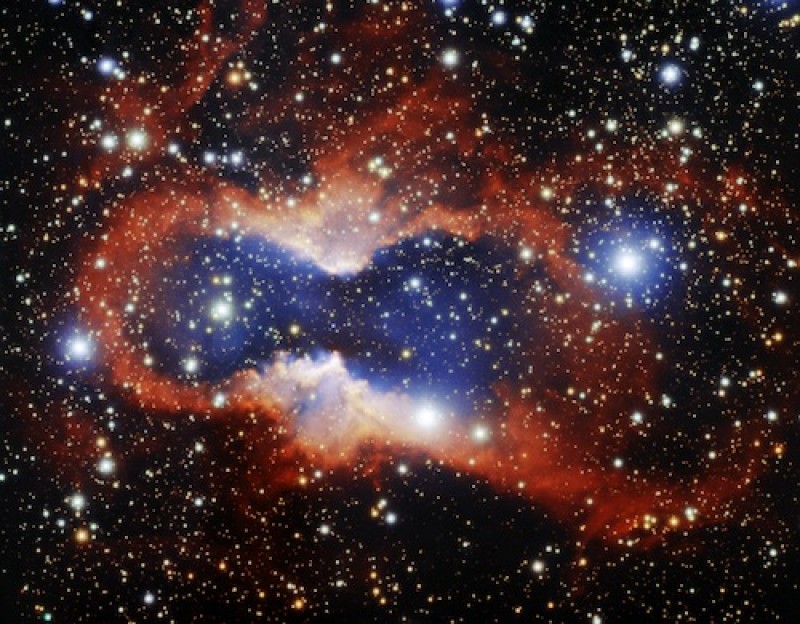
Beauty can come after death — well, at least after the death of a star.
The image captured above, taken by the Gemini Observatory, showcases the planetary nebula known as CVMP 1, which is the outcome of a main-sequence star that blew off its outer layers as it ballooned into a red giant. This cosmic wonder doesn't have a long lifespan, though. Its hourglass shape will only last about 10,000 years. And one day, the star will cool down, causing its hourglass form to fade from view.
CVMP 1 is located about 6,500 light years away in the constellation of Circinus. This planetary nebula is formed mostly of enriched helium and nitrogen and is one of the largest planetary nebulae known to astronomers.
Despite their name, planetary nebulae aren’t formed from planets. Instead, their name comes from the round, planet-like appearance some stars had when viewed through early telescopes. Planetary nebulae also take on a wide variety of shapes, including the Helix Nebula.
One day, our own Sun will likewise form a planetary nebulae with a smoldering white dwarf at its core. But don't worry, that’s still about 5 billion years away — not too long after the Milky Way and Andromeda galaxy barrel into each other.